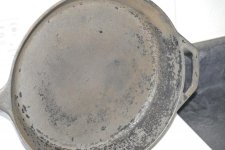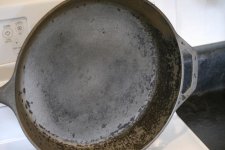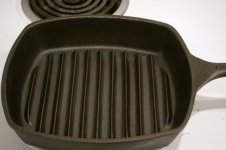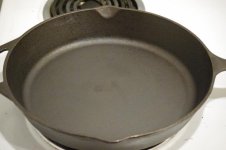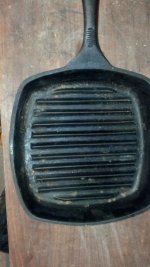thanks to all who have shared that made my first attempt at electrolysis easier and somewhat successful.
I just finished an old Lodge 12" skillet that is about 2" deep. I am having a hard time getting what must be really good carbonization and polymerization off the sides and am wondering if I'm expecting too much and if this is just elbow grease at this point or if I need to alter my set up.
If the latter, I was thinking about dangling a circular wire into the laid flat pan, but if it isn't going to pull off much more, then I won't bother.
your wisdom is appreciated...
I just finished an old Lodge 12" skillet that is about 2" deep. I am having a hard time getting what must be really good carbonization and polymerization off the sides and am wondering if I'm expecting too much and if this is just elbow grease at this point or if I need to alter my set up.
If the latter, I was thinking about dangling a circular wire into the laid flat pan, but if it isn't going to pull off much more, then I won't bother.
your wisdom is appreciated...

